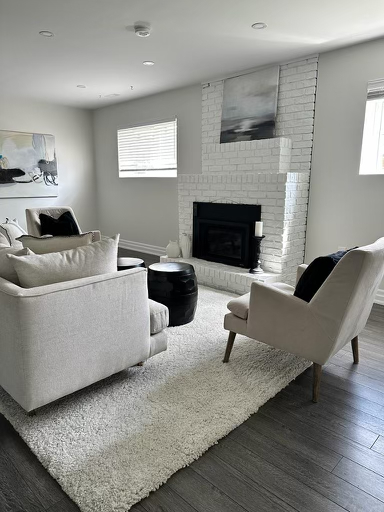The type of paint you choose for your next painting project is just as important as the colour. Paint finishes can have a major impact on the quality of your paint job and the overall look you want to achieve. If you are an inexperienced painter, you might think that the only decision you need to make is what colour of paints you should use to best complete your vision. However, though this is clearly an essential step when selecting paint, there are other things to consider to ensure that you have the proper paint for your project.
Choosing the best paint for your project can be overwhelming; the options are endless. So where should you begin? Let’s check out some of these lesser-known paint qualities so that you have all the information needed to make an informed decision when selecting your paint.

Quality of Paint
Not all paint is created equal, with individual brands having a variety of paint qualities depending on your budget and the scale of your project. At Encore Painting, we use only the highest quality paint from Sherwin Williams and Benjamin Moore, but any reputable paint company will have high quality paint.
Unsurprisingly, the higher the quality paint, the more expensive it is. But like all things, you get what you pay for. High quality paints will provide a smoother application and leave a longer-lasting finish.. Although you may spend more up front, you’ll need to repaint and touch up much less often, which will end up saving you time and money in the future.
Finish
Simply put, a paint’s finish is how shiny or reflective a paint appears on a surface. There are many degrees of paint finish, with high-gloss being the most reflective, moving through semi-gloss, satin, eggshell, and finally matte or flat finishes being the least reflective. Though there is no “wrong” finish, most people prefer satin or eggshell for interior painting. This is because it is not overpowering like the highly reflective high-gloss and doesn’t absorb too much light like a matte finish does. For exteriors, semi-gloss and high-gloss are the go-to finishes. High gloss paint, as well as being the shiniest, is also the most durable and the easiest to clean. This is why it is a great choice for high-impact areas such as front doors and garage doors. The lower level of gloss you use, the less durable and more difficult to clean the paint becomes.
However, there are some advantages to lower gloss paint, specifically its ease of application. Because high gloss paint is so reflective, any imperfections or streaks that occur during the painting process will be much more noticeable than they would be in lower gloss paint. For example, matte paint, being the least reflective finish, hides imperfections very well, so this is something to keep in mind if you are a less experienced painter and are planning on taking on the project yourself!
Additives
You should also consider the potential additives in paint. Paints with additives are engineered to provide protection or resistance to certain materials and are worth looking into depending on your painting needs. For example, if you are painting an exterior wooden deck, you might want to use a paint that has additives that make the paint resistant to mold and mildew, which wouldn’t be necessary if you were painting interior drywall. Likewise, paint that is resistant to rust would be great on a metal fence, but unnecessary on brick. Paints that have additives aren’t needed for every project, but can be a real lifesaver depending on the material you’re using and what it will be exposed to, so keep this in mind when selecting your paint.
Interior vs. Exterior
Finally, when deciding what paint to use for a project, it is essential to know if it is interior or exterior paint. Exterior paint must be durable enough to handle the battering of the elements and the temperature fluctuation between seasons, and as a result, is much more heavy duty than its interior counterpart. If you use interior paint on a building’s exterior, it will quickly crack and peel in the rain, snow, and intense heat or cold.
Exterior paints are engineered to maintain a lasting coat throughout these conditions, and should always be used for exterior painting. However, this does not mean that you can use exterior paint on an interior either. Paint science has taken huge steps since the days of lead based paints, but due to the ingredients needed to allow it to handle harsh conditions, it is still not recommended to use exterior paint in an enclosed space with potentially little ventilation. Interior paint on the other hand is designed with this in mind, and should be used exclusively for all interior painting.
Now that you know there is more to paint selection than simply picking the colour, you’re all set to go out and choose the right paint for your project. But if you would rather focus on the design side of your project and leave the technical part to the pros, or if you have more questions, Encore will be there every step of the way. Our industry leading professionals have up to date knowledge to answer any questions you might have about paint selection, and will offer personalized suggestions depending on your specific painting needs.
All our projects begin with a free evaluation, so there’s no risk in meeting with a member of our team and seeing how we can help make your painting project a reality. Contact Encore Painting Ltd. today to set up your free evaluation.